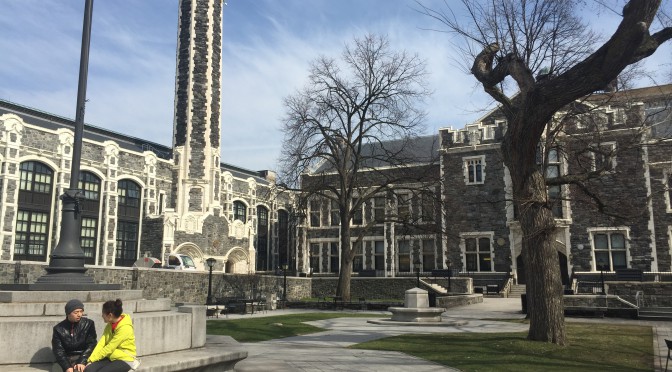The 2016 Design Incubation Fellowship will be held January 14–16, 2016 at St. John’s University’s Manhattan campus. This year’s participants may choose to pursue one of two modes for engaging with original research projects.
In the first scenario participants bring a manuscript, draft of an article, or a grant application to the fellowship and receive feedback from workshop mentors and other attendees.
The second option allows participants who may not have a project in progress to take part in the fellowship and benefit from the experience of the workshop mentors and the group. These applicants will choose to work on an exhibition or book review or statement of practice with the goal of publishing finished work in an academic or trade journal.
Design Incubation Fellowships are open to academics in one or more of the following areas: communication design, information design, branding, marketing, advertising, typography, web, interaction, film and video, animation, illustration, game design.
Format:
Workshops offer the opportunity for participants to share and develop ideas for research and individual writing projects while receiving constructive feedback from faculty mentors and peers in their field. Each meeting includes a short informational session or guest speaker followed by presentations of participants’ projects and structured feedback. Between sessions, Fellows will have time to execute revisions, review others participants work, and engage in discussions. Initiation of and work on collaborative projects is encouraged.
Application Process: Deadline October 15, 2015
Design Incubation is currently seeking applicants for the January 2016 workshop session. Workshops are free to participants whose applications have been accepted. Travel costs are not covered but a formal letter of acceptance will be provided so attendees can apply for travel funds from their home institutions.
The upcoming 2016 Design Incubation Fellowship Workshop will be held on January 14–16, 2016 at the Manhattan campus of St. John’s University, 51 Astor Place, New York, NY 10003
Applicants are required to provide contact information, title/current rank, name of their home institution and a 200-word biography. Candidates who will be working on projects already in progress should submit a 500-word description of the work including goals for publication/submission. Applicants interested in working on a review or statement of practice should indicate preference for one or the other. Once applicants are accepted, a workshop mentor will reach out regarding the choice of titles or exhibitions for review and with more information about statements of practice.
Send applications to submissions@designincubation.com.
Preference will be given to tenured and untenured full-time faculty currently employed by colleges or universities but adjuncts, graduate students, and independent scholars are also encouraged to apply.
Like this:
Like Loading...

